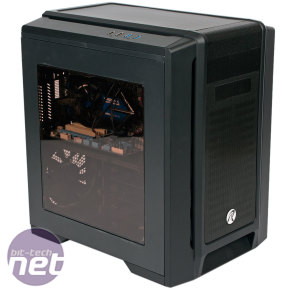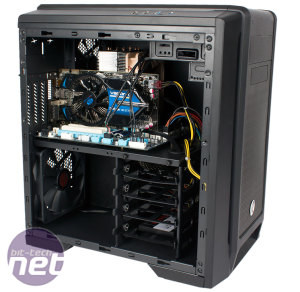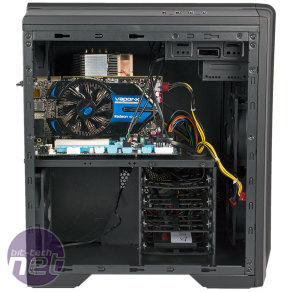
Performance Analysis
With four fans and plenty of mesh, the Aeneas has no trouble cooling our hardware. It delivers one of the best CPU delta T results we've seen at 45°C. This shouldn't come as a surprise, since cool air has a very direct path through the front of the case and out of the rear, with the design being particularly well suited to a tower cooler like ours.The GPU delta T of 51°C is also very good; it's again near the top of the charts and only 5°C off of the best result. Overall, the Aeneas has the best cooling of any cube case we've seen so far – the Fractal Arc Mini R2 and Corsair Obsidian 350D that beat it have a standard tower design, and while the SilverStone Sugo SG10 also beats it despite being more compact, it has the advantage of its 180mm Air Penetrator fan, and is the case that no other has managed to topple in the cooling department.
The good performance does come at the cost of noise, as the Aeneas is easily audible with its four fans all spinning. This makes us pine for fan control all the more, as there's clearly headroom for the fans to be toned down a little. In particular, having the lower two fans spinning at full speed is probably unnecessary for most people, even those who fill up all four hard drive bays.
Conclusion
It's hard to find too much to dislike about the Aeneas. The build quality on the individual panels could certainly be higher, but when the case is together it's a pretty solid unit, and that's what counts the most. It also matches good external connectivity with excellent hardware support – powerful SLI systems will be easy to install, and you have good options too when it comes to water-cooling and cable routing.Topping it off is the great out-of-box cooling. With four fans in a case that costs just over £65, you really can't complain too much about the value on offer. That said, we probably would have preferred it if Raijintek had dropped a fan or two in favour of on-board fan control. As we said, having those two lower fans running at full speed is overkill for most, which leads to unnecessary noise output. Still, with most major motherboard manufacturers now offering good fan control through the UEFI and Windows applications, modern systems should be able to work round this without the need to invest in new hardware – we certainly recommend diving into your motherboard's settings and having a fiddle. Either way, the Aeneas is a great option for high performance micro-ATX systems that doesn't break the bank.

-
Cooling24 / 30
-
Features17 / 20
-
Design25 / 30
-
Value19 / 20


MSI MPG Velox 100R Chassis Review
October 14 2021 | 15:04












Want to comment? Please log in.